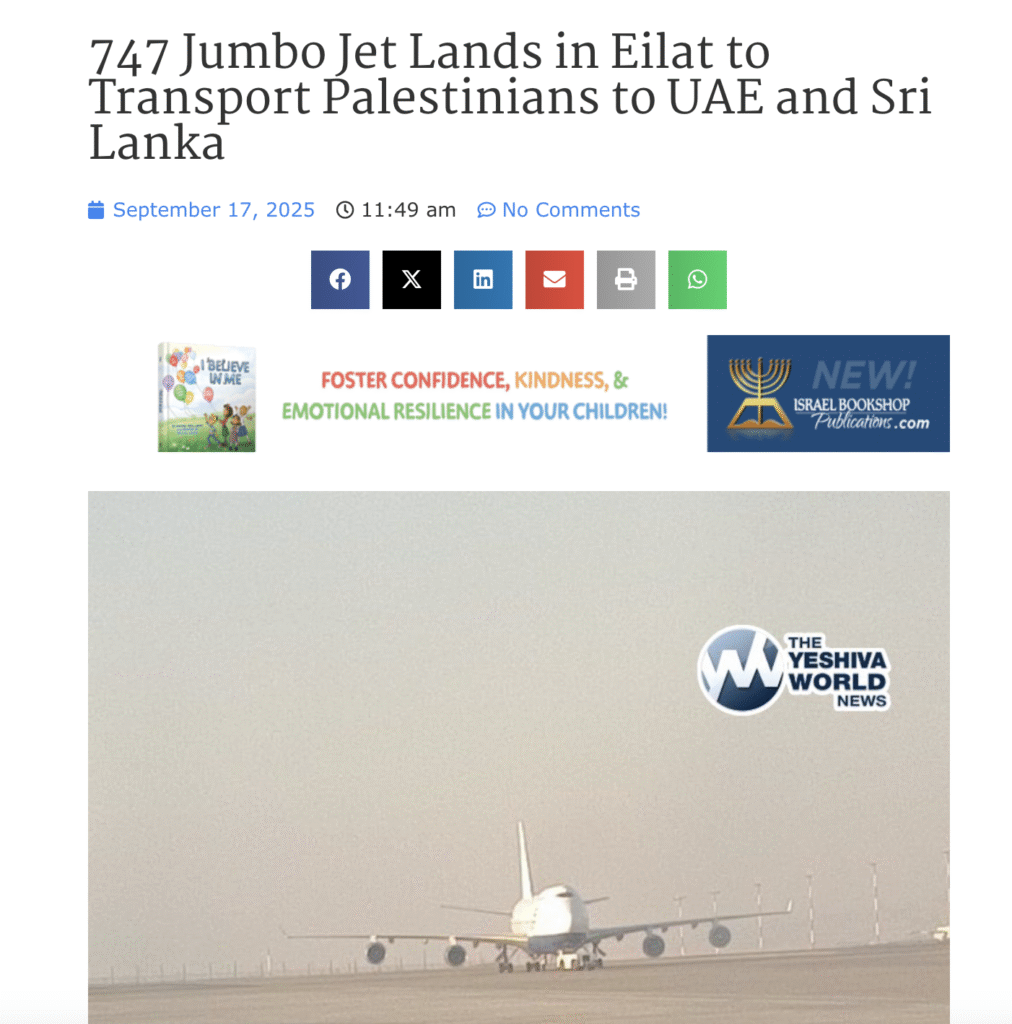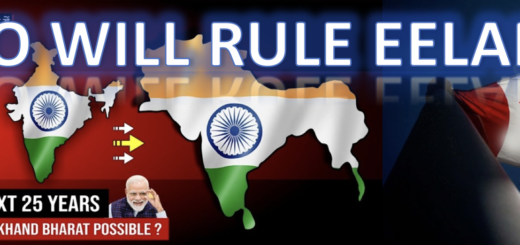Why are 2,000 Refugees being brought to Sri Lanka when the UNHCR Office has closed?

Recent reports indicate that a Boeing 747 landed in Eilat, Israel, transporting Palestinian refugees to the UAE and Sri Lanka. While around 40,000 refugees are reportedly being relocated, unconfirmed sources claim approximately 2,000 will arrive in Sri Lanka. Given the official closure of the UNHCR office and the cessation of direct support services, why has Sri Lanka been considered a destination when it is not a signatory to the UN Refugee Convention? The government’s declaration of turning part of the Mullaitivu military camp into a refugee reception center, when boatloads of Rohingya refugees arrived previously, raises questions about whether the UNHCR will fund the Sri Lankan state or military to host these new arrivals.
UNHCR Office Closure in Sri Lanka
The UNHCR office in Colombo officially closed in December 2024, ceasing refugee status determination and permanent resettlement facilitation. Since then, the agency’s presence has been reduced to a liaison officer based in the UN Resident Coordinator’s office.
With the UNHCR office closed, not only is coordination for incoming refugees uncertain, but even previously hosted refugees—such as the 116 Rohingya and 459 other asylum seekers—face indefinite uncertainty about resettlement, legal status, and basic services.
Implications: Refugees and asylum seekers in Sri Lanka no longer have direct access to UNHCR support services. Critical questions arise:
- Who will handle resettlement coordination for incoming refugees?
- Is the UN circumventing its closure to push a refugee transfer agenda?
- What happens to refugees previously hosted in Sri Lanka who have yet to be resettled in another country?
Refugee Arrivals in Sri Lanka: Historical Context
Sri Lanka has had to intermittently host Rohingya refugees over the past two decades, primarily through maritime rescues:
- 2008:55 Rohingya rescued at sea → temporarily housed, later resettled in the United States.
- 2013:170 Rohingya rescued off the eastern coast → provided basic needs, later resettled in third countries by 2015.
- 2017:30 Rohingya intercepted by the Navy → temporarily housed, later resettled abroad.
- 2022 & 2024:100–102 Rohingya rescued at sea → temporarily sheltered by Sri Lankan authorities.
- As of early 2025, approximately 116 Rohingya refugeesremain in Sri Lanka, temporarily sheltered while awaiting relocation to countries like Canada or Australia. No timeline has been provided.
- These historical examples demonstrate Sri Lanka’s experience is limited to small-scale maritime rescues; hosting 2,000 refugees would vastly exceed prior humanitarian responsibilities and logistical capacity.
- Muslim Refugees and Asylum Seekers (mid-2023):567 refugees and 224 asylum seekers, primarily Pakistanis.
Critical question: Who is coordinating their relocation now that the UNHCR office is closed? Are previous arrivals being kept in Sri Lanka indefinitely, and why is this not transparently reported to the public?
This is the most concerning part:
“As of mid-2025, Sri Lanka is hosting approximately 459 refugees and asylum seekers. Following a UNHCR decision to cease processing asylum applications and resettlement for individuals who arrived after March 31, 2022, these refugees are effectively being kept in Sri Lanka without relocation. This group includes Rohingya refugees and others who face prolonged uncertainty regarding their legal status and future resettlement”
(while they are not granted citizenship, if they marry and have children, these offsprings will be Sri Lankan citizens)
https://www.hrcsl.lk/wp-content/uploads/2024/06/HRCSL-Statement-on-World-Refugee-Day-2024.pdf
Government Payments for Refugee Accommodation
While exact financial arrangements are not publicly disclosed, governments often receive funds to support refugees. In Sri Lanka, which has not ratified the Refugee Convention, such payments may act as financial incentives, raising concerns about coercive or indirect pressure.
Without clear public disclosure, these payments risk creating a scenario where Sri Lanka is effectively financially induced to accept refugees, despite lacking legal frameworks, resources, or public consent—raising serious sovereignty and governance concerns.
Key question: Will there be transparency in the allocation and use of these funds, especially for hosting 2,000 Palestinian refugees?
Cultural and Religious Alignment: The UNHCR Responsibility
Refugees are uprooted from their homes and should ideally be resettled in countries aligned with their culture, religion, and language. Placing them in societies with opposite beliefs creates unnecessary social friction for both refugees and host populations.
UNHCR’s responsibility includes considering cultural and religious alignment to minimize social friction; failure to do so not only burdens the host nation but also complicates integration for the refugees themselves
- Catholic refugees → majority Catholic nations
- Buddhist refugees → majority Buddhist nations
- Hindu refugees → majority Hindu nations
- Muslim refugees → majority Muslim nations
Risks of misalignment:
- Social tension and misunderstandings
- Long-term integration/assimilation challenges
- Unnecessary animosity between refugees and locals
The UNHCR’s templates include assimilation metrics; ignoring these metrics cannot be due to ignorance. Placing primarily Muslim Palestinian refugees in majority Buddhist Sri Lanka represents a stark cultural and religious contrast, raising questions about UNHCR planning and intent.
Countries Surrounding Palestine
Given over 50 Muslim-majority nations exist with varying capacities to host refugees, it is unclear why Sri Lanka—a Buddhist-majority country, with economic and legal limitations—is being burdened, raising questions about UNHCR’s decision-making process and accountability
Palestinian refugees are primarily Sunni Muslims. Neighboring countries share cultural and religious affinity and can accommodate them more naturally than Sri Lanka:
| Country | Muslim Population | Economic Status | Refugee Hosting Capacity | Notes |
| Jordan | ~94% | Middle-income | Moderate | Hosts large numbers historically |
| Lebanon | ~55% | Low-income | Limited | Economic crisis, large existing refugee population |
| Egypt | ~90–95% | Middle-income | Moderate | Politically stable, limited resources |
| Syria | ~87% | Low-income | Minimal | Civil war and sanctions severely limit capacity |
Wealthier Muslim-majority nations like Qatar, UAE, and Saudi Arabia have the economic resources but historically take fewer refugees, leaving smaller nations to shoulder the burden.
Sri Lanka’s Unique Muslim Community and Historical Context
Sri Lanka’s Muslim population differs significantly from Muslim communities elsewhere. Having grown up in a predominantly Buddhist cultural environment, local Muslims share long-standing cultural and social bonds with the majority population. Extremist elements only began to emerge after the 1980s, largely influenced by external conflicts.
Historical evidence shows that some members of the Liberation Tigers of Tamil Eelam (LTTE) and other Sri Lankan Tamil militant groups received weapons and training from Palestinian factions in Lebanon. Despite decades in which lakhs of Muslims lived in refugee camps within Sri Lanka due to LTTE attacks, no Muslim-majority nation historically showed concern to protect them from LTTE violence. This underscores that external refugee placements should consider cultural, religious, and historical alignment, rather than imposing foreign populations into communities where integration and social cohesion are strained.
Muslims in Sri Lanka have closer affinity to non-Muslims in Sri Lanka than they do to fellow Muslims abroad.
Global Context and Risks
- Humanitarian and Social Burden: Large refugee influxes strain public services, housing, and social systems.
- Crime Rates: Studies show a 1% increase in refugee population correlates with a 1.7–2.5% increase in crime incidents over the following year.
- Economic Implications: Economic integration is challenging, especially for countries under stress. Example: UK asylum support fell 37% in real terms between 2000–2024.
- Regional Disparities: Low- and middle-income countries host 73% of global refugees, while wealthier nations contribute less relative to capacity.
- Misuse of Asylum Systems: Economic migrants can exploit mechanisms, diverting resources from those genuinely in need.
Questions for the UN and UNHCR
- Why is Sri Lanka chosen when it has no legal framework for refugees?
- How will 2,000 refugees be accommodated in a country facing an economic crisis?
- Why were parts of Mullaitivu military camp and other facilities used as refugee centres, and who is funding them?
- Are payments or incentives being offered to the Sri Lankan government to take refugees, if so how much?
- With 50+ Muslim-majority countries near Palestine, why is Sri Lanka burdened instead?
- How will integration be ensured without social tension, especially given religious and cultural differences which UNHCR is well aware of?
- Will this set a precedent for future refugee transfers without parliamentary approval?
- Why are refugees placed in countries with opposite cultures or religions, creating friction, rather than in nations where religion and culture are the same?
Implications for Sri Lanka
Humanitarian Responsibility Under Strain:
With the UNHCR office closed and no legal framework for refugee management, Sri Lanka is being compelled to assume responsibility for refugees without adequate resources, planning, or institutional support. Hosting large groups—such as the proposed 2,000 Palestinians—places unprecedented pressure on public services, housing, and social infrastructure.
Risk of Permanent Settlement:
With a significant number of refugees reportedly not to be resettlement but remain in Sri Lanka, Sri Lanka faces the prospect of permanent settlement without legal safeguards, citizenship planning, or social integration frameworks.
Sovereignty and Governance:
By compelling Sri Lanka to host refugees without parliamentary debate or legal mandate, especially public approval international actors risk undermining national sovereignty.
Social Friction-Cultural & Religion non-alignment Intensified: Placing refugees in communities with opposing cultural and religious practices increases the likelihood of long-term tension and challenges for both locals and refugees. Such secret agreements are unfair by both refugees and locals.
International Leverage and Pressure: Sri Lanka is being placed in a diplomatically uncomfortable position. As a non-signatory to the Refugee Convention, the government cannot formally commit to hosting refugees. Accepting refugees in exchange for funding—or perceived international favor—risks public backlash, social unrest, and heightened tensions for a population already grappling with economic hardships.
Precedent for Future Decisions: Hosting refugees without legal frameworks, parliamentary oversight, or cultural alignment sets a dangerous precedent. It could open the door to future pressures to accept additional refugee groups, effectively bypassing national sovereignty and local consent.
Sri Lanka is being positioned as a one-sided host, under economic strain, cultural mismatch, closure of UNHCR operations, and public opposition. Without legal frameworks or parliamentary oversight, forced responsibility risks permanent refugee settlement, social friction, and erosion of sovereignty. Refugee resettlement must respect cultural, religious, and legal alignment to ensure sustainable integration; failing to do so endangers both the host nation and the refugees themselves – these lopsided policies and secret decisions are unfair by both the refugees and the people of the forced host-nations. We can see this taking place with people taking to the streets in UK, Europe, US and even Australia.
Shenali D Waduge







